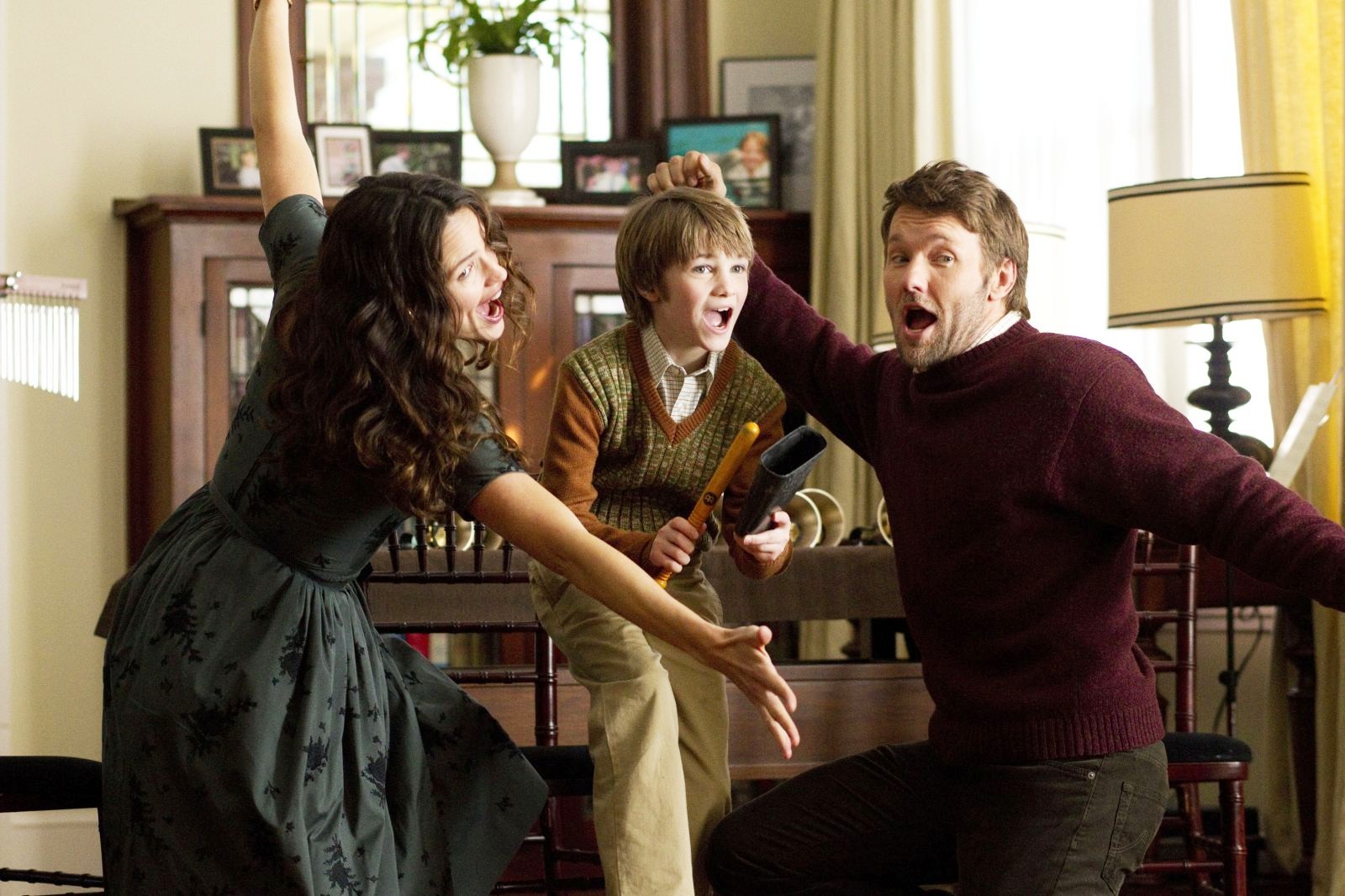Directed by Peter Hedges
Written by Peter Hedges
USA, 2012
For better or worse, The Odd Life of Timothy Green is a cinematic definition of the word “cute.” Its premise—a childless couple finds a mud-covered boy in their garden the night after burying a box describing their dream child—is so whimsical you might gag on it. Peter Hedges, the film’s writer and director, doesn’t do himself many favors regarding the somewhat underdeveloped script. He does have one big piece of help: the impressive ensemble cast, led by Jennifer Garner and Joel Edgerton, who elevate every scene to make this a charming late-summer diversion.
Garner and Edgerton play Cindy and Jim Reed, a husband and wife living in the small town of Stanleyville, the pencil capital of the world. Cindy works as a tour guide at the local pencil museum, and Jim works in the pencil factory. What they really want in life is to be parents, but after years of trying, their doctor tells them all natural options are gone. One night, a slightly tipsy Cindy and Jim write wishes for what their ideal child would be like. After burying it in the yard, an inexplicable and extremely localized rainstorm delivers them a 10-year old boy named Timothy who has leaves on his legs and dubs Cindy and Jim his mother and father. Their lives, and everyone else’s, change quickly thanks to Timothy’s unique influence.
Honestly, the concept (Hedges wrote the script, but Ahmet Zappa—yes, Frank’s son—is credited with the story) too often toes the line from natural whimsy into obnoxiously forced and twee quirkiness. As frequently as some sequences or characters may ring perfectly true or be inspiring and uplifting, others land with a thud, such as one where the song “Low Rider” plays a key role. Somehow, The Odd Life of Timothy Green succeeds because of the ensemble cast and the technical elements outside of Hedges’ direct contributions. Garner is, to be fair, playing a variation on her character from Juno, the uptight and overcautious adult who’s most willing to open her heart to a child she can call her own. But even more so here, Garner does a fine job of being endearingly square, as opposed to a grating screen presence. Edgerton exudes the same blue-collar charm he had in Warrior, and does his best with a barely sketched-in character arc.
If there’s a slight misstep in the casting, it’s with CJ Adams as Timothy. Adams, whose face is somewhat reminiscent of a young Joseph Gordon-Levitt, isn’t a notably bad child actor—frankly, that he isn’t either spectacularly talented or unappealing is fine. But the script doesn’t give him that much dialogue, so he’s left squinting or looking plain puzzled more often than not. Though his performance is the weakest, part of the blame lies with him simply being overmatched by the strong supporting cast. Most of the best character actors in the business—James Rebhorn, Lois Smith, M. Emmet Walsh, Rosemarie DeWitt, and Dianne Wiest, among others—have a little to play with, though it’s never enough. Ron Livingston, another solid character actor, plays the ostensible (though not particularly odious) antagonist, Jim’s weaselly boss Franklin Crudstaff. (See? You know he’s bad because “crud” is in his name. How clever.) Livingston’s fine here; what’s striking is that he’s now old enough to play the same dispassionate boss character he once rebelled against in the cult classic Office Space. (Commence feeling old, everyone.)
Another subtle yet remarkable element in The Odd Life of Timothy Green is the cinematography, from Oscar winner John Toll. Toll’s used to a more epic canvas, having previously lensed movies like Braveheart and The Thin Red Line, but even in this quieter, small-scale film, he enhances the visual palette by emphasizing the soothing autumnal colors in Stanleyville. He may not get a nod for his work, but Toll’s contribution is especially strong.
Hedges’ script is, however, too quick to let plot threads drop and move on, making The Odd Life of Timothy Green feel too episodic, as if there’s little continuity from one scene to the next. Early on, we meet Jim’s gruff father, played by David Morse. It’s clear that Jim and his father have issues because the latter was never that affectionate or paternal. There’s no real resolution to this arc; we get the idea that Timothy has changed Jim’s father’s attitudes in life, but he displays no real active change. Or, for example, a subplot involves the pencil factory potentially shutting down; the way this story resolves isn’t entirely unexpected, but isn’t treated with any finality or triumph. It’s as if Hedges realized something had to be done, and quickly tossed off a scene.
The Odd Life of Timothy Green is saddled with a contrived and predictable story, yet is wholly likable and entertaining because of the people working inside that story. You may know exactly how this film is going to end after the first 30 minutes. The joy isn’t in the story’s twists and turns, it’s in watching old pros like Morse, Walsh, and Wiest get a kick out of playing a twist on familiar roles. The solid performances are, thankfully, enough to latch onto with The Odd Life of Timothy Green.
– Josh Spiegel




